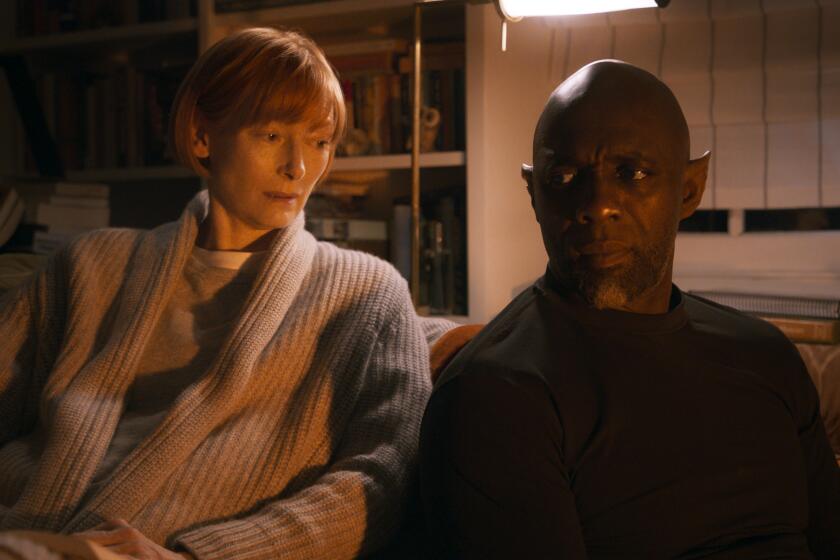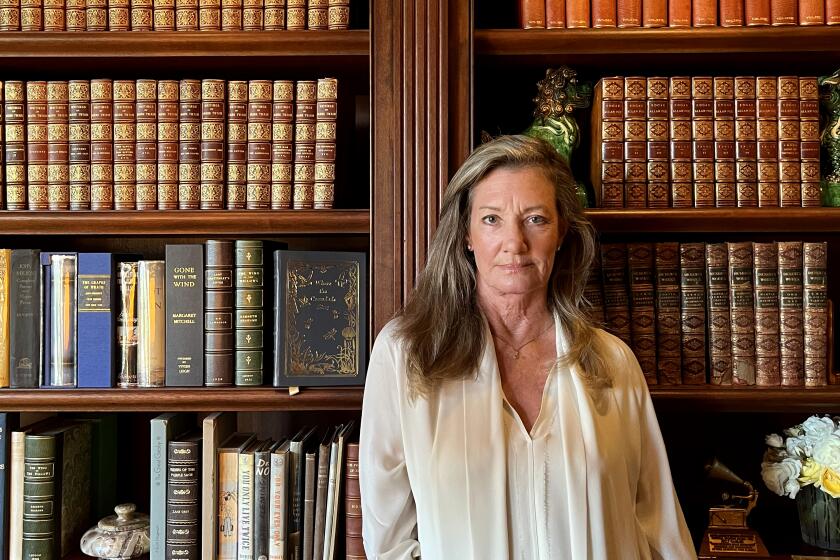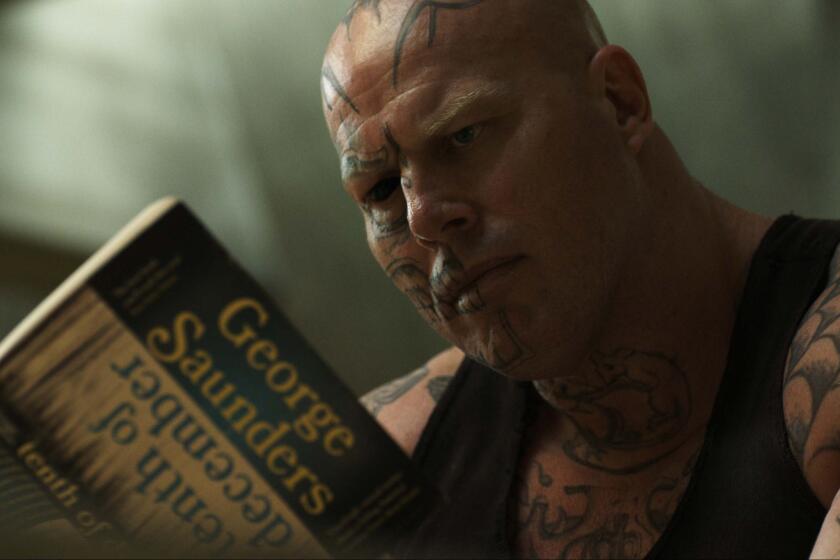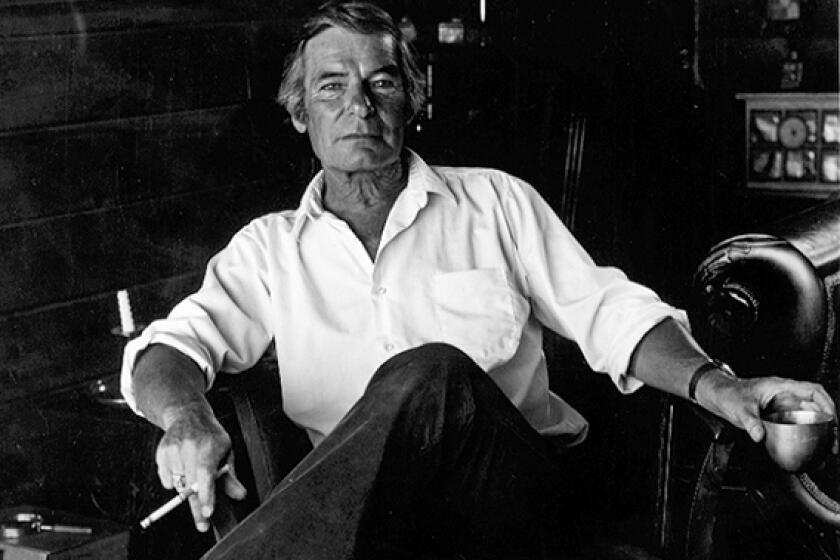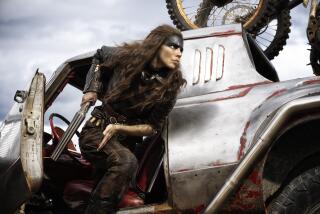Page-to-Screen: ‘Three Thousand Years of Longing’ Byatt minus the feminism (and genie sex)
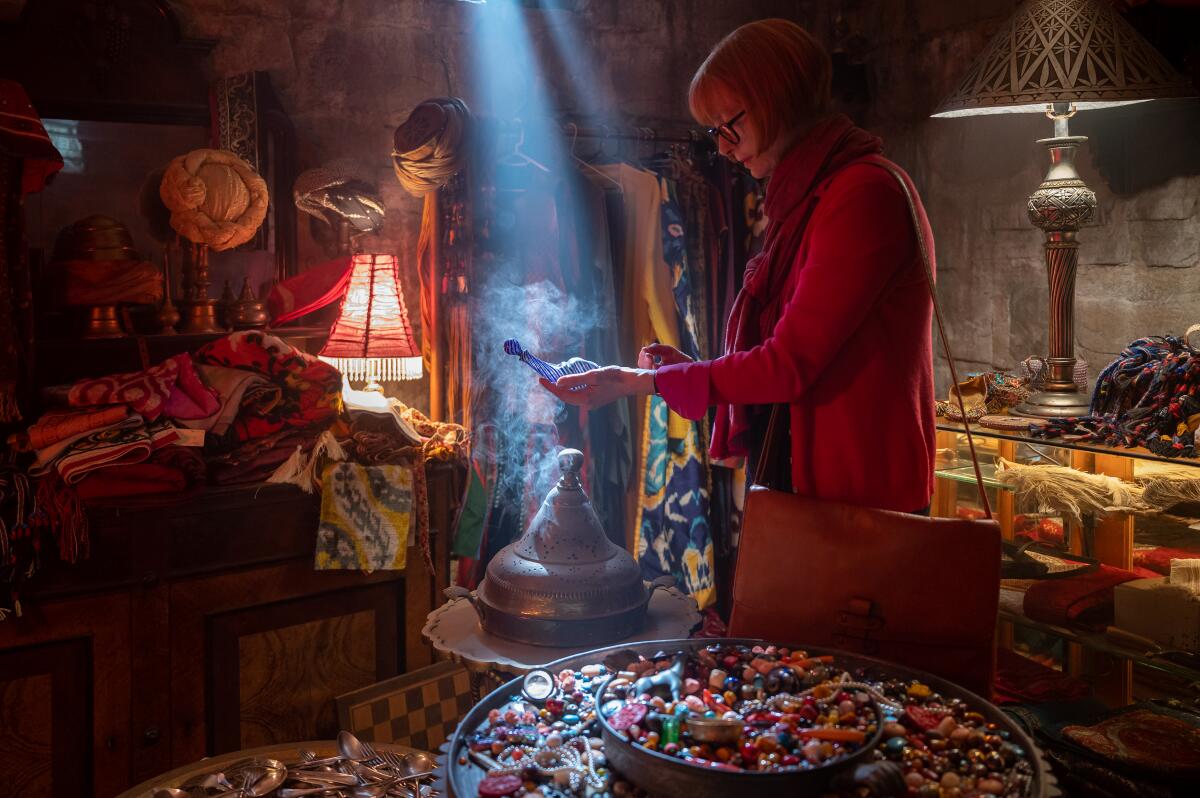
Once upon a time, in 1994, disillusionment was de rigueur. It was the year of “The Ice Storm” and “Prozac Nation,” during the reign of Bret Easton Ellis. In this time lived a collector of legends, a long-acclaimed storyteller. Into the literary abyss, she offered something unlikely: a book of fairytales, “The Djinn in the Nightingale’s Eye.”
A.S. Byatt’s collection begins with several Grimm-like fables. But tucked away behind them is a feminist novella, her book’s title story, which first ran in the Paris Review. Formally, it’s quietly daring, an intricate, unfolding puzzle box. A yarn about a scholar and a djinn serves as a proscenium for tales from many sources, from Scheherazade to the TV news. They all probe the theme of the Turkish narratology conference where the two principals meet: “Stories of Women’s Lives.” Together, they prove that classical fantasy and unembroidered realism needn’t stand at odds. Rather, their alchemy produces a potent way to view our world.
In between films in the ‘Mad Max’ franchise, filmmaker George Miller explores the stories we tell ourselves in a fantasy-romance starring Idris Elba and Tilda Swinton.
George Miller’s new film, “Three Thousand Years of Longing,” adapts Byatt’s novella but shifts focus away from the scholar Alithea (Tilda Swinton) and onto the djinn (Idris Elba). Miller and co-writer Augusta Gore preserve the stories the djinn tells Alithea while more or less scrapping the rest of the text. Miller’s direction illuminates the djinn’s tales to their maximum potential; there could be no one better for the job than the director of “Mad Max” and “The Witches of Eastwick” (and “Happy Feet” and “Babe: Pig in the City”).
Without the interwoven stories, especially those told and lived by the scholar, what’s left becomes pure, lavish fantasy, likely the film’s goal. Still, it’s disappointing to lose Byatt’s heterodox perspective and matter-of-fact intimacy and to see her theme subverted through a narrowing of the heroine’s role.
The fictional scholar loves her work. She’s happily divorced. In the book, she has grown children. She enjoys conferences for seeing the world and her colleagues. In Istanbul she speaks on the topic of Patient Griselda, the female Job in Chaucer’s “Canterbury Tales.” Afterward she tours the country and its temples with her hosts, hearing epic myths of all kinds. In Turkey, the clash between religious tradition and secular modernity operates at a fever pitch, underscoring the centrality of past stories to present life.
The adaptation of Delia Owens’ mega-bestselling novel heralds the launch of Elizabeth Gabler’s pioneering book-to-film shop, Sony’s 3000 Pictures.
Back in Istanbul, the scholar buys a “nightingale’s eye” bottle at the bazaar, from which a djinn emerges in her hotel room to grant her three wishes. First she wants a younger body, though not a “perfect” one. She tells the djinn she was assaulted by a friend’s father in college, which she blamed on her young body’s power. So she wishes for her 32-year-old form, and presto! The djinn turns back the clock 25 years. When he refers to “what women most desire,” the scholar supposes it’s equality with men. The djinn won’t confirm, so the question lingers.
Perhaps Miller felt out of his depth trying to take on these topics and events (he’d probably be right), or perhaps he just wasn’t interested. Maybe he also feared that the scholar would somehow steal the djinn’s thunder, because he’s reduced her to the familiar figure of asocial intellectual. She arrives at the conference and, within minutes, the djinn appears in her room and takes over. In both book and film, she asks for his story, then wishes for him to love her. Their liaison, inventively explicit on the page — it’s sex with a genie! — gets barely a chaste nod in the film.

Miller devotes his considerable imagination to the djinn’s tales. He illustrates them faithfully and extravagantly, and they’re marvels to behold. The film’s title refers to the djinn’s captivity: first with the Queen of Sheba, then with a slave girl and, last, with a lady genius. Sheba, half-djinn herself, falls for Solomon, who seduces her with enchanted instruments. Their lust makes everything sparkle with gold in Sheba’s desert palace, where “Fury Road” landscape meets Wakanda style. When they unite, Solomon casts the jealous djinn into the Red Sea in a flask. It’s a sumptuous amalgam of Arab and Jewish folklore, spun off from bits of the Bible and Quran.
After 2,500 years, the flask washes ashore in Turkey. It journeys to the medieval court of Suleiman the Magnificent and consort Roxelana, who rose from white slave to sultan’s wife and changed the Ottoman Empire. The djinn, uncorked by a harem girl, witnesses blood-soaked intrigues and harrowing CGI spiders (anyone else who ran screaming from “Captain EO” as a child, cover your eyes). A few sultans later, the crown falls on Ibrahim, a prince with a fetish for rooms lined with fur and the fattest concubines his mom can procure. Much of this is historical record. In Miller’s hands, it’s a visual feast.
After a stint bottled up in the Bosporus, the djinn lands with thwarted polymath Zefir. She would have rivaled Da Vinci with her brilliant inventions and art — if only she were male. The djinn becomes her lover and teacher but can’t escape her frustration. Before long, he’s back in a bottle, the one the scholar buys a few centuries later.
The new movie “Spiderhead,” starring Chris Hemsworth and Miles Teller, distorts a great George Saunders story into an empty good-versus-evil tale.
In the book, the djinn and the scholar attend a second conference. With an assist from the djinn and his knowledge of obscure folklore, the scholar speaks on wish fulfillment, aging and desire. The episode brings the story full circle and leads her to set him free. In the film, though, the two leave Istanbul for the scholar’s London home. Modern technology convinces the djinn that humans no longer need magic. When the scholar frees him, she’s not being generous: Electromagnetic waves are destroying him.
In her alternation of stories, Byatt created a kinship, and a narrative equivalency, among princess, peasant, prostitute and professor. Taken together, their parables of embodiment and social roles reflect what has and hasn’t changed for women since antiquity. In a story with drowned pregnant slave girls, sumo wrestler-like courtesans and virgin djinn queens with legs covered in fur, the heroine’s experiences of her own body aren’t incidental. It’s unfortunate that Miller treats them that way by excising them from his telling.
In the world of literary fiction, Byatt’s work remains deeply untrendy. The late Angela Carter stands out as a rare fellow traveler. But accomplished filmmakers have more often paired legends with close studies of women’s lives: Neil Jordan’s adaptation of Carter’s “The Company of Wolves,” Catherine Breillat’s “Bluebeard” and “Sleeping Beauty,” Agnieszka Smoczynska’s mermaid tale “The Lure” and older classics like “The Red Shoes” are only a few. Another Idris Elba film, Debbie Tucker Green’s BAFTA-winner “Second Coming,” takes on the consequences of immaculate conception.
While Miller declines the challenge of representing the story’s most meaningful aspects, his spectacular rendering of the djinn’s tales makes his film a lesser counterpart to Italian folklore collections like “Kaos” and “Tale of Tales.” It’s a tradition forged by Pasolini’s “Trilogy of Life” — itself emphatically carnal and brimming with social critique. Miller, however, is no neorealist.
And so, our noble director leaves the realm of feminist fiction, voyaging past his dominion of English-speaking penguins and pigs, to the kingdom from which he’ll send forth his next film: another installment of “Mad Max,” about a young Furiosa. Maybe someday, we’ll get to see how Tina Turner’s Aunty Entity copes with retirement. I’m certain it’s a story worth telling.
Many have failed to adapt Thomas Savage’s 1967 novel ‘The Power of the Dog.’ Jane Campion was perfect for it; both author and director deserve adulation.
Johnson has written for the Guardian, the New York Times, Los Angeles Review of Books, the Believer and others. She lives in Los Angeles.
More to Read
Sign up for our Book Club newsletter
Get the latest news, events and more from the Los Angeles Times Book Club, and help us get L.A. reading and talking.
You may occasionally receive promotional content from the Los Angeles Times.
